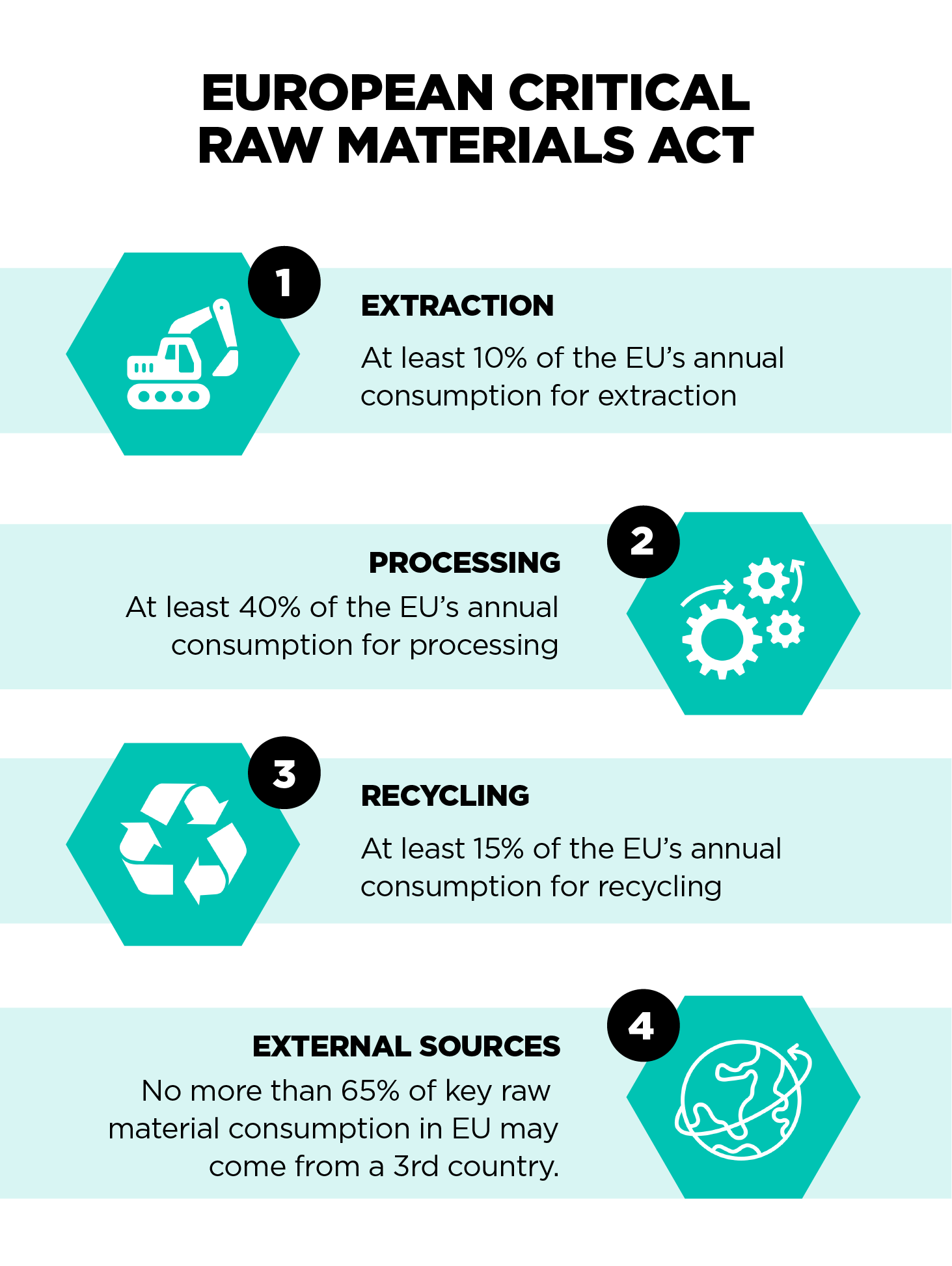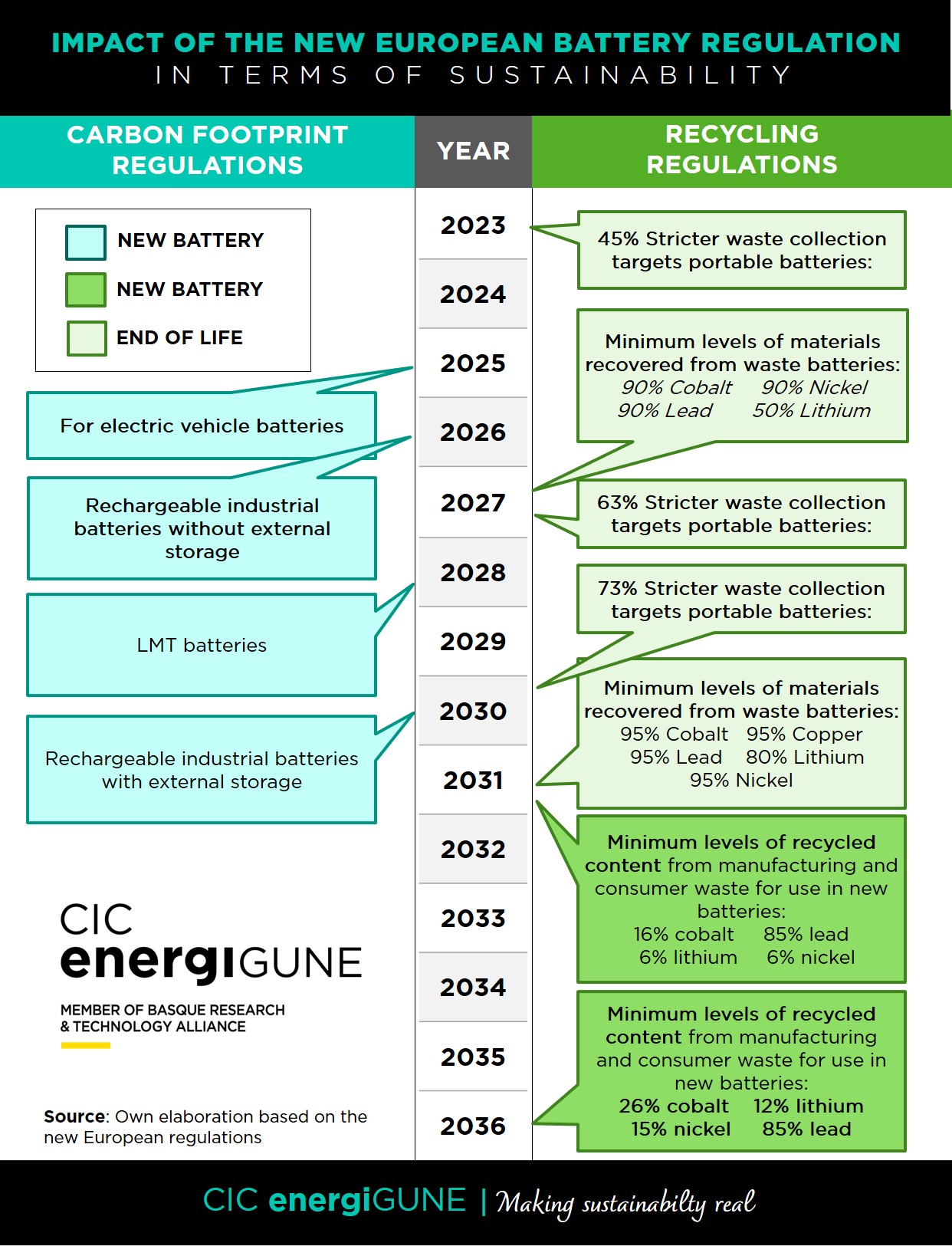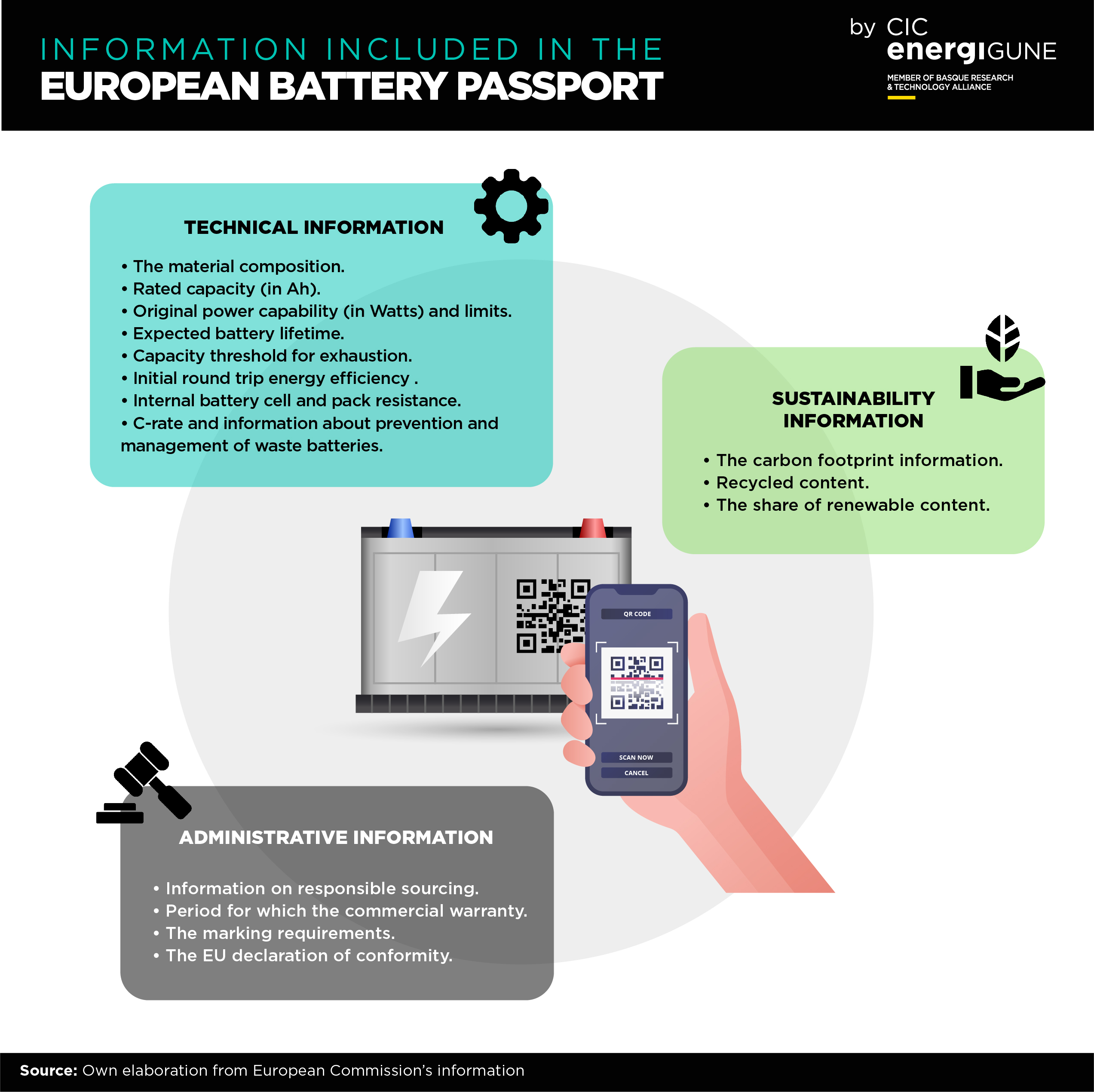As explained in the text approved by the European Parliament this month “this Regulation should prevent and reduce adverse impacts of batteries on the environment and ensure a safe and sustainable battery value chain for all batteries, taking into account, for instance, the carbon footprint of battery manufacturing, ethical sourcing of raw materials and security of supply, and facilitating re-use, repurposing and recycling”.

This is crucial because this regulation not only specifies rules from a technological and environmental point of view, but also defines responsibilities of stakeholders along the value chain of batteries, including detailed information and rules for guaranteeing that batteries meet the requirements defined.
This regulation defines the groups of batteries that should be subjected to its requirements: electric vehicles batteries, light means of transport batteries (LMT), industrial batteries (rail, waterborne and aviation transport or off-road machinery) and energy storage (in private or domestic environments) and furthermore, it specifies how the suppliers of battery cells and battery modules shall provide the information and documentation necessary to comply with those requirements.
This new framework is a good example of how regulations should be integrated into not only technical but also sustainability parameters that guarantee the high level of quality of products developed in the European Union.
In this case, the regulation sets out parameters related to electrochemical performance and durability and parameters for determining the state of health and expected lifetime of batteries, including the technical specifications, standards and conditions used to measure, calculate or estimate the values for the electrochemical performance and durability parameters.
Related to the Carbon Footprint, the regulation defines that a carbon footprint declaration shall be drawn up, for establishing carbon footprint performance classes. Carbon footprint should be included relevant information such:
Depending on the distribution of the values in the carbon footprint declarations of batteries placed on the market, a meaningful number of classes of performance shall be identified. For example, category A will be the best class with the lowest carbon footprint life cycle impact, to enable market differentiation of the battery categories.
Furthermore, it is important to remark that this regulation defines the last version of the Commission Product Environmental Footprint (PEF) method and relevant Product Environmental Footprint Category Rules (PEFCRs) of batteries will be the method of calculation and verification of the carbon footprint.
Carbon footprint will be declared for electric vehicle batteries by 2025; for rechargeable industrial batteries except those with exclusively external storage by 2026; for LMT batteries by 2028 and for rechargeable industrial batteries with external storage by 2030.
In terms of recycling, as we explained before, it defines targets for recycling efficiency of batteries, targets for recovery of materials and targets for percentage of using recycling materials in production of new batteries.

This chapter is critical in the regulation due to not only defines a clear strategy of guaranteeing the circularity of the batteries but also it contributes to reduce European Union dependency on the critical raw materials supply.
Among others, in this chapter it is defined the minimum levels of materials recovered from waste batteries by 2027 (Lithium 50%, Cobalt 90%, Nickel 90% and Lead 90%) and 2031 (Lithium 80%, Cobalt 95%, Nickel 95% and Lead 95%); and it is defined the minimum levels of recycled content from manufacturing and consumer waste for use in new batteries by 2031 (Lithium 6%, Cobalt 16%, Nickel 6% and Lead 85%) and 2036 (Lithium 12%, Cobalt 26%, Nickel 15% and Lead 85%).
Another important point is related to the mandatory battery due diligence. At this point, it defines that due diligence should address, at least, the most prevalent social and environmental risk categories and it is imposed on economic operators placing batteries on the market or putting them into service.
As we explained before the battery passport is one of the most important points of this regulation. The aim of the battery passport is to enhance transparency along supply and value chains for all stakeholders, maximize the exchange of information, enable tracking and tracing of batteries and provide information about the carbon intensity of their manufacturing processes, the origin of the materials used and recycled materials.
And it is so important to remark that the Battery Passport is a Digital product passport and for that it shall be fully interoperable with other digital product passports defined in the Eco-design standard in relation to the technical aspects of end-to-end communication and data transfer.
Some concerns about sensitive information requested by the battery passport are one of the issues treated in this regulation. In fact, it is defined that certain sensitive information necessary should not be public and will be limited to a number of persons with a legitimate interest. The document adopted defines “this applies to information on dismantling, including safety, and detailed information regarding the composition of the battery, which is essential for repairers, remanufacturers, second-life operators and recyclers”.
Battery passport should include among others, this information:

This new regulation allows the harmonization of batteries produced and commercialized in the European Union but for sure it is a challenge, and it will be necessary a real implication of all stakeholders in the whole life cycle of the batteries for achieving the requirements defined.
And of course, it is necessary to work hard and fast to ensure that new technologies of batteries meet all requirements defined in the regulation from technical and sustainable perspective.
At CIC energiGUNE we are committed to contribute to these challenges thoroughly our disruptive technologies focused on meeting the requirements of the market.

Author: Andrea Casas Ocampo, sustainability specialist at CIC energiGUNE.

If you want to know the latest trends in energy storage and new developments in research, subscribe.

If you want to join a top-level team, collaborate with specialists in multiple disciplines or tell us about your concerns, don't think twice...